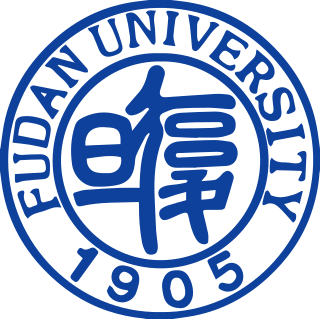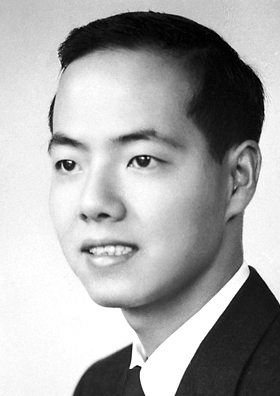Related Research Articles

Fudan University is a national public research university in Shanghai, China. Fudan is a member of the C9 League, Project 985, Project 211, and the Double First Class University identified by the Ministry of Education of China. It is also a member of Universitas 21, Washington University's McDonnell International Scholars Academy, and the Association of Pacific Rim Universities, BRICS Universities League, Association of East Asian Research Universities, and Council on Business & Society.

Admission to the bar in the United States is the granting of permission by a particular court system to a lawyer to practice law in the jurisdiction and before those courts. Each U.S. state and similar jurisdiction has its own court system and sets its own rules for bar admission, which can lead to different admission standards among states. In most cases, a person is "admitted" or "called" to the bar of the highest court in the jurisdiction and is thereby authorized to practice law in the jurisdiction. Federal courts, although often overlapping in admission standards with states, set their own requirements for practice in each of those courts.

Yang Chen-Ning or Chen-Ning Yang, also known as C. N. Yang or by the English name Frank Yang, is a Chinese theoretical physicist who made significant contributions to statistical mechanics, integrable systems, gauge theory, and both particle physics and condensed matter physics. He and Tsung-Dao Lee received the 1957 Nobel Prize in Physics for their work on parity non-conservation of weak interaction. The two proposed that one of the basic quantum-mechanics laws, the conservation of parity, is violated in the so-called weak nuclear reactions, those nuclear processes that result in the emission of beta or alpha particles. Yang is also well known for his collaboration with Robert Mills in developing non-abelian gauge theory, widely known as the Yang–Mills theory.

Tsung-Dao Lee is a Chinese-American physicist, known for his work on parity violation, the Lee–Yang theorem, particle physics, relativistic heavy ion (RHIC) physics, nontopological solitons, and soliton stars. He was a University Professor Emeritus at Columbia University in New York City, where he taught from 1953 until his retirement in 2012.
The Graduate Record Examinations (GRE) is a standardized test that is an admissions requirement for many graduate schools in the United States and Canada and a few other countries. The GRE is owned and administered by Educational Testing Service (ETS). The test was established in 1936 by the Carnegie Foundation for the Advancement of Teaching.
A medical school is a tertiary educational institution, professional school, or forms a part of such an institution, that teaches medicine, and awards a professional degree for physicians. Such medical degrees include the Bachelor of Medicine, Bachelor of Surgery, Master of Medicine, Doctor of Medicine (MD), or Doctor of Osteopathic Medicine (DO). Many medical schools offer additional degrees, such as a Doctor of Philosophy (PhD), master's degree (MSc) or other post-secondary education.
University admission or college admission is the process through which students enter tertiary education at universities and colleges. Systems vary widely from country to country, and sometimes from institution to institution.
Pre-medical is an educational track that undergraduate students in the United States pursue prior to becoming medical students. It involves activities that prepare a student for medical school, such as pre-med coursework, volunteer activities, clinical experience, research, and the application process. Some pre-med programs providing broad preparation are referred to as “pre-professional” and may simultaneously prepare students for entry into a variety of first professional degree or graduate school programs that require similar prerequisites.

The National College Entrance Examination (NCEE), commonly known as the gaokao, is a standardized college entrance exam held annually in Mainland China. It is required for entrance into all higher education institutions at the undergraduate level in the country. It is usually taken by students in their third and last year of senior high school.

A law school is an institution or professional school specializing in legal education, usually involved as part of a process for becoming a judge, lawyer, or other legal professional within a given jurisdiction.
Sam Bard Treiman was an American theoretical physicist who produced research in the fields of cosmic rays, quantum physics, plasma physics, and gravity physics. He made contributions to the understanding of the weak interaction and he and his students are credited with developing the so-called standard model of elementary particle physics. He was a Higgins professor of physics at Princeton University, a member of the National Academy of Sciences and member of the JASON Defense Advisory Group. He was a student of Enrico Fermi and John Alexander Simpson Jr. Treiman published articles on quantum mechanics, plasmas, gravity theory, condensed matter and the history of physics.

Nanjing Foreign Language School is a middle and high school located in Xuanwu District, Nanjing, Jiangsu, People's Republic of China. It was established in 1963 under the direction of Zhou Enlai, the first Premier of PRC, and is one of the oldest foreign language schools in China. Its mottos are "Chinese Soul, Global Vision" and "Seek the truth, Scale the height, Be erudite, Be modest".
An admission to practice law is acquired when a lawyer receives a license to practice law. In jurisdictions with two types of lawyer, as with barristers and solicitors, barristers must gain admission to the bar whereas for solicitors there are distinct practising certificates.

The Kaohsiung Medical University is a private medical school located in Sanmin District, Kaohsiung, Taiwan.
The Special Class for the Gifted Young is a program aimed to select gifted young students to enter the universities in China. First established in 1978 at the University of Science and Technology of China, it was a major innovation in China's higher education. The idea was suggested by renowned scientists such as Tsung-Dao Lee, C. N. Yang, and Samuel C. C. Ting, and supported by the then Vice-premier of the State Council Fang Yi. The objective of the class is to explore the most efficient ways to nurture promising youth. Peking University, Tsinghua University, Nanjing University, Wuhan University, Jilin University, Shanghai Jiaotong University and Huazhong University of Science and Technology also launched similar programs. But they were all shut down for all kinds of reasons. Currently, only the University of Science and Technology of China and Xi'an Jiaotong University still have this program.
The General Certificate of Education (GCE) Advanced Level, or A Level, is a main school leaving qualification in England, Wales, Northern Ireland, the Channel Islands and the Isle of Man. It is available as an alternative qualification in other countries.

Ye Qisun, also named Ye Hongjuan (叶鸿眷), was a Chinese physicist and one of the founders of modern physics in China.
The Silliman University Medical School (SUMS) is an academic unit of Silliman University (SU), a private university, in Dumaguete, Philippines. Established on March 20, 2004, the school used to hold classes at a two-storey annex beside the Angelo King Allied Medical Sciences Center inside the SU Campus. In 2013, the school transferred to its new building. As one of the newest medical schools in the Philippines, its pioneering batch graduated in 2009. The first batch of graduates who took the physician board exams in 2010 all passed giving the school its first 100% passing rate. The second graduating class that took the said exams in 2011 also passed giving the school another 100% passing rate. On its third batch of graduates who took the Physician Licensure Examinations in the year 2012, the medical school yet again attained a 100% passing rate, making it the third time in three consecutive years for the school to attain a perfect passing percentage. Its partner institution is the Silliman University Medical Center.
Zhou Tongqing, also known as Tung-Ching Chow, was a Chinese optical physicist. After earning his Ph.D. from Princeton University, he taught at Peking University, National Central University, Shanghai Jiao Tong University, and Fudan University. He led the development of China's first X-ray tube in 1953 and was elected a founding member of the Chinese Academy of Sciences in 1955. His research was disrupted when he was subject to severe persecution during the Anti-Rightist Campaign and the Cultural Revolution. Although later politically rehabilitated, he was plagued by poor health for the rest of his life.
References
- 1 2 3 "Early History of CUSPEA". 2007-03-12. Archived from the original on 2007-03-12. Retrieved 2021-08-29.
- ↑ Adler, Stephen L. (2001). "Sam Bard Treiman". Biographical Memoirs: Volume 80 (2001). The National Academies Press. pp. 328–346. doi:10.17226/10269.
Treiman and [his wife] Joan were early participants in the CUSPEA (Chinese/U.S. Physics Examination and Application Program) conceived by Tsung-Dao Lee in 1980 to help facilitate the admission of mainland Chinese students to physics graduate education in the United States. He and Joan went to China in 1981, 1982, and again in 1988 to examine and interview prospective candidates for the program.
- ↑ Treiman, Sam (1996). "A Life in Particle Physics". Annual Review of Nuclear and Particle Science . 46: 1–30. Bibcode:1996ARNPS..46....1T. doi: 10.1146/annurev.nucl.46.1.1 .
The candidates were also given an English language examination prepared by academics in China. After the results were collected, the US physicists and their spouses traveled to China to interview the candidates deemed to have successfully passed the examinations. The team then distributed the interview summaries along with the exam grades to participating American universities.
- ↑ "CUSPEA '82". 2007-07-20. Archived from the original on 2007-07-20. Retrieved 2021-08-29.
- ↑ "CUSPEA '81". 2007-07-20. Archived from the original on 2007-07-20. Retrieved 2021-08-29.
- ↑ "| General Staff DirectoryRLE at MIT". www.rle.mit.edu. Retrieved 2021-08-29.
- ↑ "CUSPEA '84". 2007-07-20. Archived from the original on 2007-07-20. Retrieved 2021-08-29.